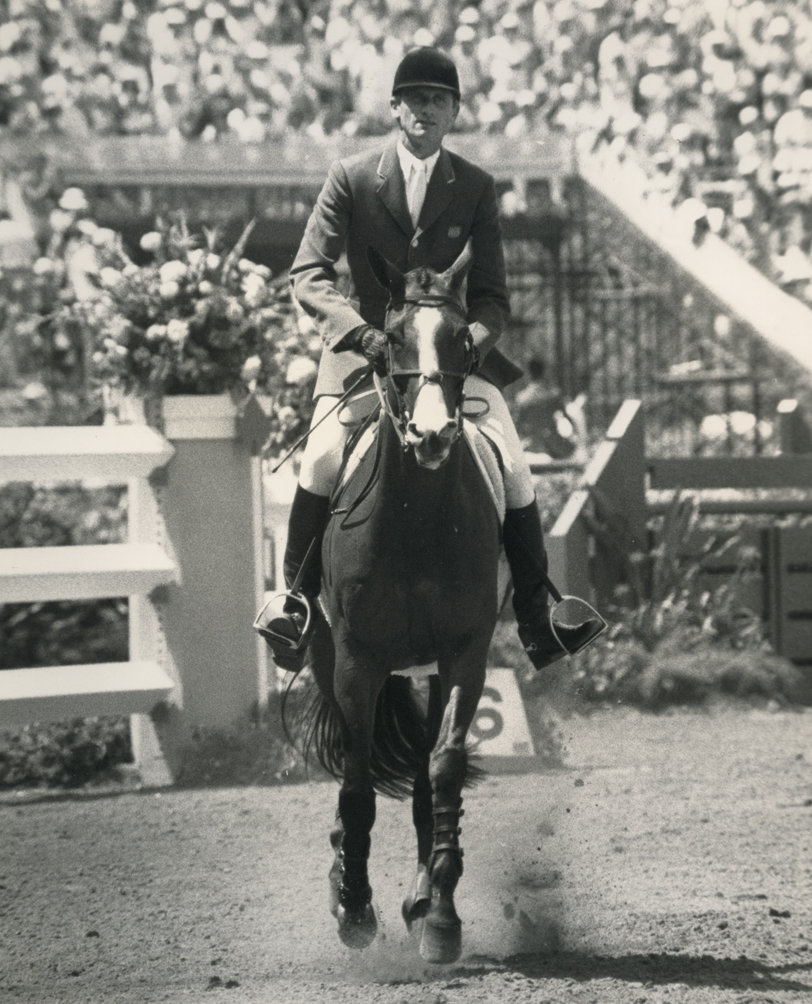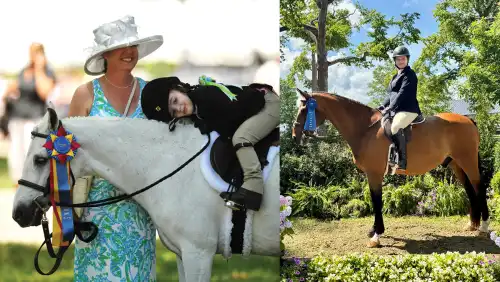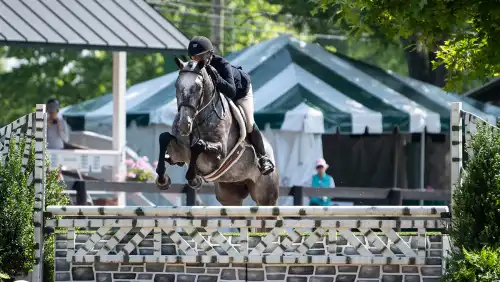Wondering where the next generation of riders is going to come from is one thing. Questioning what they’ll be riding is a whole other topic.
In the heyday of U.S. show jumping, the vast majority of top horses had North American origins. The legendary Touch Of Class, For The Moment, Idle Dice and Jet Run all were American-bred Thoroughbreds who started out on racetracks. Gem Twist never set foot on a track, having been bred out of classic jumper lines by Frank Chapot, but he was an American Thoroughbred. Abdullah, a Trakhener, was bred in Canada.
Go down the list of top U.S. show jumpers now and count how many were bred in North America. In the top 25 horses in the 2011 year-end standings for the U.S. Grand Prix Horse of the Year, not one was bred in the United States.
Further down the list, things get somewhat better. The 27th horse, Bristol, was bred in California by Rusty and Kandi Stewart. And Blair and Karen Cudmore of Nebraska bred Shea, in 28th. But of the top 50 horses, only four are U.S.-bred. And none are Thoroughbreds. European warmbloods are simply dominating. The question is: Are the European horses really that much better? Or are there similar quality horses being produced in this country, and riders just aren’t looking for them here?
Stop The Tsunami
“We have become consumers, not producers, which is simply a reflection of the country as a whole. There is no internal supply of horses, and horses are treated like tennis rackets. That puts us at a real disadvantage. We’re relying on Europe for everything. We’re quickly losing our identity and it’s very, very sad.”
Thus spoke George Morris in the Nov. 7 open forum on show jumping hosted by the U.S. Equestrian Federation in Lexington, Ky. (Read an edited version of his speech in the Dec. 19 issue of the Chronicle.)
“I admit that I helped to start this in 1977, when Melanie Smith Taylor and I were over in Europe, and she bought a little speed horse called Vivaldi. That led into Calypso the next year, and then everyone wanted a Calypso. I was one of the first to buy horses from Europe. That started this tsunami of horse importation,” Morris continued.
ADVERTISEMENT
“Somehow, we have to get back to the horses we have in this country. There are tens of thousands of horses out there. There are Gem Twists out there. The American Thoroughbred is the best sport horse in the world. I had two very early European mentors, Otto Heuckeroth at Ox Ridge, who was a great horseman, and Bertalan de Némethy. Both of those Europeans told me repeatedly, ‘George, the best horses in the world are these American Thoroughbred horses.’ I would like somehow in the next 25 years to see some people with deep pockets get back in that direction and utilize this internal resource.”
Murray Kessler of the North American Riders Group echoed Morris’ words in the Nov. 7 open forum. “We are at a significant disadvantage in the area of breeding. Almost all of our horses come from European descent. These large and well established breeding programs are tightly controlled by governing bodies. Simply said, we get second choice for the best horses in the world.
“Complicating this further is the dwindling number of owners in the United States,” he continued. “There was a day when great show jumpers were synonymous with their owners—Idle Dice and Harry Gill, F. Eugene Dixon and Jet Run, Patrick Butler and Balbuco, just to name a few. Today, the glory of being an owner is gone. And as horse shows have added more and more amateur jumper divisions, today you get more recognition owning an adult jumper than owning a team horse. We think the development of these divisions is great for horse shows and trainers, but the Federation needs to help us encourage investment from potential owners by making it special to be a team owner again.
“The breeding situation is tough, but to echo George and his comments, we do have the American Thoroughbred. We used to have great Thoroughbreds competing in the grand prix ring like Gem Twist, For The Moment, Touch Of Class, Chase The Clouds, Jet Run, Albany, and on and on. Somehow, we need to tap into the thousands of Thoroughbred breeders in the United States and show them that there is big money to be made beyond racing.”
It’s Cost-Prohibitive
Riders and owners speaking at the forum raised the issue that showing expenses in the United States make developing a young horse up through the ranks extremely prohibitive financially.
Suzanne Porter grew up show jumping in England and now has two sons, Wilton and Lucas, competing in the jumpers. They’re based at the family’s Sleepy P Ranch in Bartonville, Texas, and competed in Europe with Katie Prudent this summer.
“A few years ago, we thought it would be a great thing to have a young horse to bring along. We bought a 6-year-old [Primero], ran him through the 7- and 8-year-old young jumper classes, and he was Horse of the Year as a 7-year-old [in 2009],” Porter said. Primero also competed in low junior/amateur-owner jumpers with Wilton but spent most of 2011 in the performance hunter division and the USHJA International Hunter Derbies with Peter Pletcher.
ADVERTISEMENT
“We calculated the cost of [2009] just out of curiosity, and it was $125,000 for one year, to build the best 7-year-old jumper in the country. That’s not including his purchase price. You can’t do that. That’s too expensive,” Porter said. “The horse shows need to look at what they do in Europe, where to take a young horse to a show is inexpensive, and there are young horse shows. You’re never going to have a pipeline of horses if it costs that much to develop them.”
Grand prix rider and NARG President Chris Kappler pointed to prize money as another factor in the finances of developing a young horse. Realignment of prize money is a major goal of NARG. A NARG press release stated: “NARG believes prize money should increase in relation to the level of riding, fence height and class difficulty.”
“In Wellington, [Fla., in the FTI Winter Equestrian Festival], they gave away $130,000 in non-professional sport every Sunday, and 5-, 6- and 7-year-olds are jumping for $1,500 in their big classes,” Kappler said. “That’s where our best young horses and professional riders are—that’s the development stream. They’re winning next to nothing. I think that’s just a completely upside down process. The prize money rule needs to change. It’s got to be professionals winning prize money so that people can make a living at the sport, developing horses and developing owners. That’s something that’s severely limiting the forward progress of our sport.”
Read the second installment of the series, a discussion of the young rider pipeline.
Read the fourth installment of the series, which discusses strengthening U.S. horse shows.
The entire open forum on Nov. 7 was broadcast on the web and is archived for viewing at www.usefnetwork.com. More open forums on the subject are planned, including one that took place on Dec. 5 during the USHJA convention.
USEF officials hope these forums will inspire a blueprint for how to improve the sport of show jumping as a whole, with a 25-year plan for the future.















